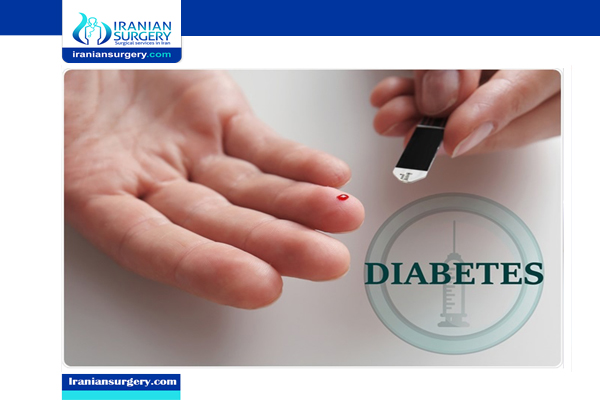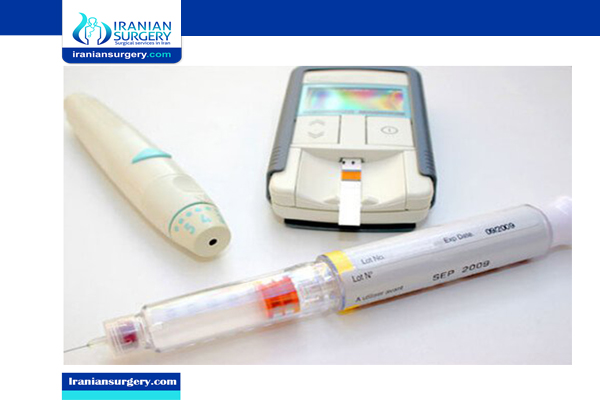FBS

What to know about fasting blood sugar?
Fasting blood sugar levels give vital clues about how a person’s body is managing blood sugar. Blood sugar tends to peak about an hour after eating and declines after that.
High fasting blood sugar levels point to insulin resistance or diabetes, while abnormally low fasting blood sugar could be due to diabetes medications.
Knowing when to test and what to look for can help keep people stay healthy, especially if they have diabetes or are at risk of developing the condition.
Fasting blood sugar levels
The body needs glucose for energy, and glucose comes from the food we eat. However, the body does not use all of this energy at once. Insulin makes it possible to store and release it as necessary.
Following a meal, blood sugar levels rise, usually peaking about an hour after eating.
How high blood sugar rises, and the precise timing of the peak depends on the person’s diet.
Factors relating to food that can trigger significant rises include:
- eating large meals
- consuming sugary foods and drinks
- eating foods with simple carbohydrates, or carbs, such as bread and sweet snacks
As blood sugar rises, the pancreas releases insulin. Insulin lowers blood sugar, breaking it down so that the body can use it for energy or store it for later.
However, people who have diabetes have difficulties with insulin in one of two ways:
- Those with type 1 diabetes do not produce enough insulin because their body attacks its insulin-producing cells.
- Those with type 2 diabetes do not respond well to insulin in their body and, later, may not make enough insulin.
In both cases, the result is the same, with people experiencing high blood sugar levels and difficulty using glucose, or blood sugar.
This means that fasting blood sugar depends on three factors:
- the contents of a person’s last meal
- the size of their previous meal
- their body’s ability to produce and respond to insulin
Blood sugar levels between meals offer a window into how the body manages sugar. High levels of fasting blood sugar suggest that the body has been unable to lower the levels of sugar in the blood.
This points to either insulin resistance or inadequate insulin production and, in some cases, both.
When blood sugar is very low, diabetes medications may be lowering blood sugar too much.

Testing
There are two methods that individuals or healthcare professionals use for assessing fasting blood sugar levels:
- A conventional blood sugar test
- A glycosylated hemoglobin (HbA1c) test
The HbA1c test
The HbA1c test measures how the body is managing blood sugar over time, usually the last 2–3 months.
The person will undertake this test at the doctor’s office or in a lab. If levels are very high, the individual may need a second test. The results show as a percentage.
HbA1c is the main test that doctors use to manage diabetes.
Blood sugar testing at home
A person can test their blood sugar levels at home.
In most cases, doctors ask people to measure fasting blood sugar immediately upon waking and before they have anything to eat or drink. It may also be appropriate to test blood sugar before eating or sometimes 2 hours after a meal when blood sugar has returned to normal levels.
The right time to test is dependant on treatment goals and other factors. For example, most people with diabetes do not need to test between meals unless they are using a diabetes drug that can lower blood sugar. Other people may test between meals if they feel their sugar levels may be low.
Since they do not make any insulin, some people with type 1 diabetes need to test several times a day. They do this because they need to check their levels regularly in order to adjust their insulin dose at that time.
To do the blood sugar test, a person will:
- Prepare the testing strip and glucose monitor to be ready for the blood sample.
- Clean the testing area, usually the side of a fingertip, using an alcohol swab.
- Lance the testing area. Bracing against a firm surface can help with the impulse to pull away.
- Squeeze the testing area around the wound to maximize blood flow.
- Squeeze a drop of blood onto the test strip.
- Put the strip into the monitor.
- Record the time, blood sugar reading, and recent food intake in a log.
Home testing
Target blood sugar numbers are as follows, in milligrams per deciliter (mg/dl):
- Fasting (morning testing before food or water): 80–130 mg/dl
- Two hours after starting a meal: Under 180 mg/dl
However, the target numbers will vary between individuals. A healthcare professional will help a person identify their own target levels.

Maintaining healthy levels
It is vital to follow a healthful diet to keep fasting blood sugar from rising too high. Strategies include:
- Limiting the intake of sugar and salt.
- Choosing whole-grain bread and pasta instead of white bread and pasta.
- Eating foods that are rich in fiber to help the body lower blood glucose levels.
- Eating high-protein foods to support feelings of fullness.
- Choosing non-starchy vegetables that are less likely to trigger blood glucose spikes.
People who are taking diabetes drugs and who are at risk of dangerous blood sugar dips should follow a similar diet. They also need to take proactive steps to prevent blood sugar from dropping. Those include:
- Eating regular meals throughout the day.
- Increasing food intake and snacking frequency during intense physical activity.
- Avoiding or limiting alcohol beverages.
- Consulting a doctor if vomiting or diarrhea make it difficult to manage blood sugar.
Symptoms of an imbalance
People are likely to experience symptoms if their blood sugar levels are too low or too high.
Low blood sugar levels
Symptoms of unhealthy fasting blood sugar may include low energy, tiredness, and headaches.
Blood sugar that is too low can cause symptoms such as:
- shaking and sweating
- feeling jittery
- difficulty concentrating
- lack of energy
- pale skin
- fatigue or tiredness
- headaches or muscle aches
- fast or irregular heartbeat
- weakness
- lack of coordination
In extreme cases, low blood sugar can trigger seizures, loss of consciousness, confusion, and the inability to drink or eat.
High blood sugar levels
Very high blood sugar, or hyperglycemia, can cause the following symptoms:
- increased hunger or thirst
- excessive urination
- blurred vision
- headache
- tiredness
As with low blood sugar, high blood sugar may cause loss of consciousness or seizures if people leave them untreated. Persistent high levels can increase the risk of serious complications that doctors relate to diabetes, such as cardiovascular disease.
When to see a doctor
If a person’s blood sugar levels are high more than three times in a 2-week period without an apparent reason, the National Institute for Diabetes and Digestive and Kidney Diseases (NIDDK) recommend that they seek medical help.
Any significant change in blood sugar patterns warrants a visit to a doctor. People with diabetes and those at risk of diabetes should also consult a doctor if:
- blood sugar levels become unusually high or low
- well-managed blood sugar levels are suddenly start fluctuating
- people have new or worsening symptoms of diabetes
- they change their medication or stop using it
- they experience abnormally high blood pressure
- they develop an infection or sore that will not heal
Diabetes needs ongoing monitoring, and the treatment can change over time. Information about diet and exercise is vital to enable a doctor to outline a proper treatment plan for each person individually.
People with diabetes can assist their doctor by keeping detailed logs and being transparent and accurate about dietary or lifestyle changes.

